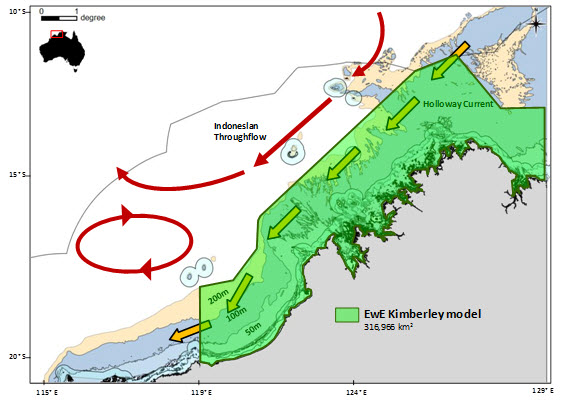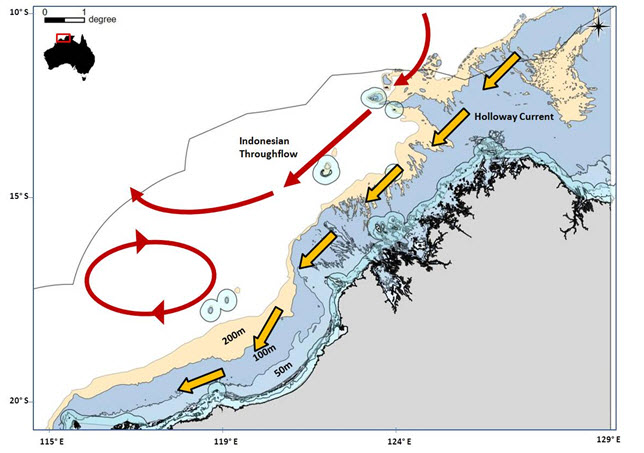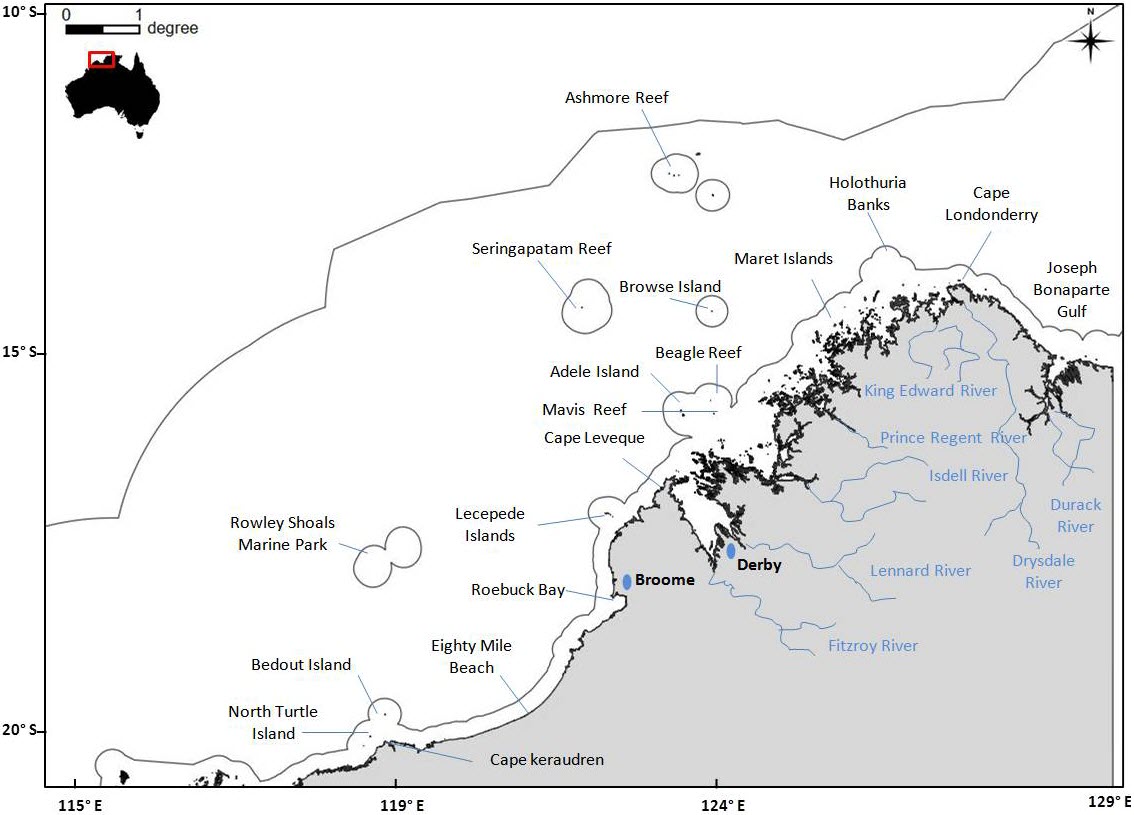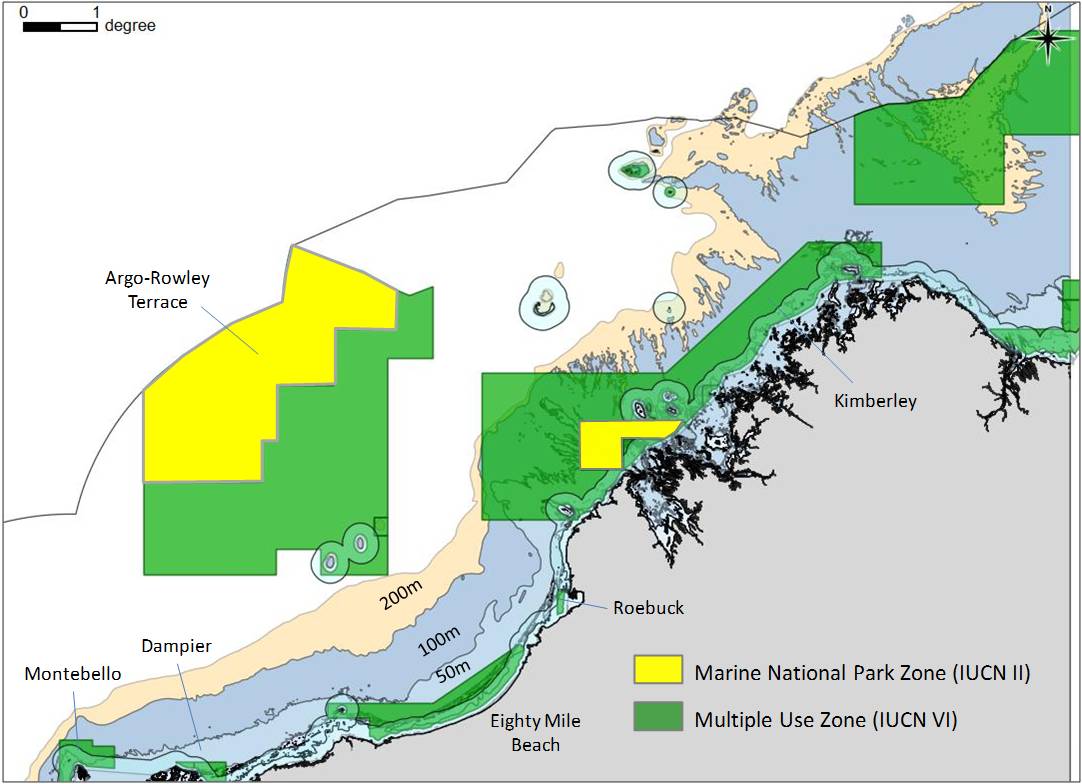Project title: Knowledge integration and Management Strategy Evaluation modelling
Program: Kimberley Marine Research Program
Modelling the future of the Kimberley region
The Model Domains
A model domain represents the geographical area covered by the model. The borders of the domain thus discriminate between what spatial features are ‘internal’ or ‘external’ to the model. The choice of the model domain thus reflects what we treat as internal and external to the Kimberly system. This choice is problem-specific. It depends on type of questions we need to answer and what processes are relevant to those questions. It also depends on technical issues related to the characteristics of the models we use, the computational effort they require and the level of model complexity we are willing to accept.
In addition, workflow constraints are critical. While ideally we would like to be able to change the model domain according to how the project develops and what questions become relevant when more information is made available, in practise this is rarely possible, since all model implementation steps depend on the model domain. As a result this choice has to be finalised early in a modelling project.
Here we describe the domains of both EwE ad Alces models and the reasons why these domain shave been chosen.
Ecopath with Ecosim
 |
| Figure 1. The EwE Model Domain |
Figure 1 shows the EwE model domain. The rationale for this choice is more easily understood by analysing both the bathymetry and main ocean currents as in Figure 2 below.
 |
| Figure 2. Bathymetry and main ocean currents over the Kimberley region |
| Model Boundary | Rationale |
| North. It roughly follows the 200m depth contour |
|
| West. 119°E, southern end of the Eighty-Mile Beach) |
|
| East. Joseph Bonaparte Gulf, border with the Northern Territory. |
|
Alces
Coming soon..
Other Maps
 |
| Figure 3. Main geographical features of the Kimberley region |
 |
| Figure 4.Marine Parks and Multi-use Areas |